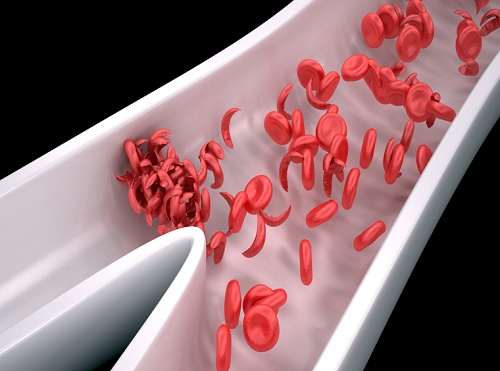People suffering from sickle cell disease can suffer from splenic sequestration. It is a condition in which red blood cells affected by sickle cell disease get accumulated in the spleen in large quantity. Therefore, the spleen gets enlarged and damaged, resulting in malfunctioning. If the spleen is not working properly, it can put the person at risk of developing various life threatening bacterial diseases. A sudden onset of splenic sequestration can be life threatening.

What Cause Splenic Sequestration?
In normal condition, the round and flexible red blood cells have no problem moving through the blood vessels. However, their morphology changed to rigid, sticky and sickle or crescent moon shaped in the sickle cell disease. These cells then get stuck in the smaller blood vessels, blocking the blood flow.
Splenic sequestration occurs when there is intra-splenic accumulation of sickle red blood cells. The spleen can get enlarged to a size which fills the entire abdomen. The hemoglobin level drops, leading to hypovolemic shock and then death which happens within hours of the initial onset of the condition. Volume expanders and blood transfusion should be done promptly to reverse the hypovolemic shock.
- Who May Be Affected by Splenic Sequestration?
It is common in infants and children suffering from sickle cell disease. It is mainly seen in children in the age group of 5 months to 2 years. It could be resultant of respiratory infection. The spleen can get damaged from wear and tear by the sickle cells through the years. It can be caused due to viral illness as well.
Symptoms of Splenic Sequestration
Splenic sequestration can cause sudden and severe onset of anemia, along with weakness, rapid breathing, pale lips, pain in the belly, increased thirst and rapid heartbeat.
It is better to check the size of the spleen regularly in children suffering from sickle cell disease. The doctor can let you know how to check it. It is important to know that sudden enlargement in spleen should be given emergent medical attention.
Treatments for Splenic Sequestration
1. Admission to Hospital
A person with a sudden onset of splenic sequestration should be immediately admitted to hospital in the ICU (Intensive Care Unit). Hospital admission should be quick, especially if a person comes with low hemoglobin count, drop in hematocrit, pain, gastrointestinal bleeding, heart failure, low blood pressure and increased pulse rate etc.
2. Treating Splenic Sequestration Crisis
There is need to transfuse packed RBCs (red blood cells) immediately so that the hemoglobin level is maintained. Care should be taken to avoid high hemoglobin levels. A lot of care needs to be taken in these scenarios with constant monitoring of various different parameters. Liver function, spleen size and electrolyte level should all be checked.
3. Treating Children over Five and Adults
Since there is high rate of recurrence, splenectomy is usually advised in children over five years of age. Sometimes it is postponed till second episode. Prior to surgery, pneumococcal and meningococcal vaccines are given. Post-surgery penicillin is given for prophylaxis. If splenectomy is not done, chronic transfusions will be required.
4. Treating Children under Five
For children under two year-old, transfusions are done every three to four weeks so that the hemoglobin levels are maintained. After two years of age, splenectomy is required. For three to five year-old with splenic sequestration, elective splenectomy is performed. These measures are controversial because there is a need to avoid surgery and maximize the immune function.
5. Treating Renal Insufficiency
When the erythropoietin levels fall below 200 u/ml, exogenous erythropoietin is administered. The doses range from 4000 to 10000 units and is given three times a week.
6. Nursing Considerations
Parents should be taught about the symptoms of splenic sequestration so that early diagnosis is possible. In case of infants, the signs of anemia should be identified by parents early. Parents can be taught how to assess the size of the spleen. Elderly people often feel that pain but take it as a natural part of growing old and thus ignore the symptoms. Hence more care should be taken for assessing the problem.
